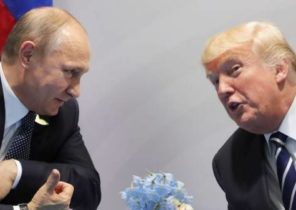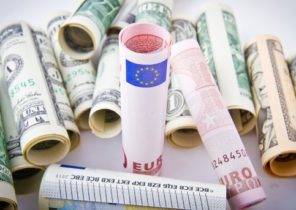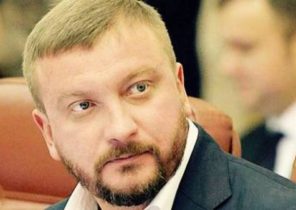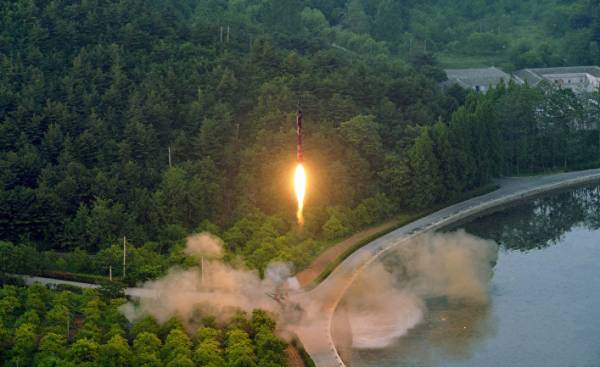
“I’ll be back,” declared General Douglas MacArthur in March 1942, when the Japanese during the Second world war occupied the Philippines. He really came back, retook the Philippines in 1945 led the allies to victory in the Pacific.
Subsequently, MacArthur commanded the UN forces in Korea when North in June 1950 attacked the South. He stopped the advance of the Communists by a desperate amphibious landing at Inchon. Despite this, President Harry Truman the following year, sent MacArthur to resign for insubordination, because he advocated the invasion of Northern China, causing the people’s liberation army of China came to the aid of North Korea. Plan MacArthur envisaged nuclear strikes on China, which prospects were even more alarming.
Today, the Ghost of General MacArthur once again haunting the Korean Peninsula as the strategic puzzle game, which today face the Americans, very much like 1951. Specifically, the problem is the following: how to contain the recalcitrant North Korea, not unleashing a war without resorting to nuclear escalation?
Rocket etiquette
During the presidential race, and after his inauguration, Donald trump claimed that he would act more decisively in respect of the Kim dynasty that has ruled North Korea since 1948. This policy became a little clearer when the national security adviser Herbert McMaster stated that the North Korean policy of threats and provocative actions “simply cannot continue.”
“Provocative actions” that North Korean nuclear and missile threat. Nuclear program of this country is gaining momentum since the end of the cold war, when Communist regimes began to disappear one by one. The nuclear Arsenal was seen as a deterrent to a possible invasion of the Western imperialist powers.
In the subsequent the North are increasingly flaunted their means of delivery of nuclear weapons. Since 2005, when the North Koreans appeared short-range missiles “Nodong”, Pyongyang regularly conducts missile tests in the sea of Japan. The new generation of missiles “Taepodong-2” estimated range is more than six thousand kilometers, and its enough to strike at the US West coast.
To negotiate with North was difficult, and it forced the Obama administration to resort to a policy of “strategic patience.”
But at the heart of this policy lies in the hope that North Korea can voluntarily give up nuclear weapons, or the regime will collapse spontaneously. It does not correspond to real events because of self-confidence in the North Korean authorities are becoming more. March 17, 2017 the Secretary of state Rex Tillerson put an end to this era of passivity, saying at a press conference in Seoul: “Let me say loud and clear: the policy of strategic patience has ended. We explore a range of new measures from the field of diplomacy and security. Anything is possible”.
The Doctrine Of Trump?
From April 2017, when the United States attacked with cruise missiles on the Syrian airfield, and trump has shown he’s willing to use military force, reinforcing the proverbial red line, the diplomatic calculations began to change.
But what all of this means for a complex security balance in East Asia? What is the outcome without the war on the pre-emption suit the current administration, and what might be its difference from the seemingly forgotten today, “pivot” Obama to Asia?
In other words, whether in this quarter to back new international policeman? But even the harsh world police type of Truman and Eisenhower believed such an outcome is extremely dangerous and undesirable. Security dilemma in its current form reflects the outcome of a half-forgotten war in the Asia-Pacific region, after which Korea was split in half. The consequence of the atomic interchange of the Second world war was supported by the Advice of Lenin, the North Korean regime headed by the grandfather of Kim Jong UN Kim Il Sung and supported by Americans the government in the South.
The unexpected transition of China to communism in 1949, after which Kim Il sung in 1950, attacked South Korea, has led to the Truman doctrine, originally designed to counter Soviet communism in Europe, is rapidly used in Asia, namely the Korean Peninsula, where “the sword stretches to the very heart of Japan.”
A frozen conflict
The Korean war never ended. The 1953 armistice, it was simply frozen along the 38th parallel, which became the border between North and South. This war also dragged the United States into the branched structure of alliances in East and South-East Asia, initiated by the us-Japan mutual defense Treaty, 1952, remaining a cornerstone of the regional policy of Washington.
Meanwhile, based on the ideology of Juche (development relying on their own power) and the regime of Kim Il-sung and his grandson Kim Jong-UN is increasingly dependent on China. Mao and the subsequent Chinese leaders believed the dictatorship of the KIMS “as close as lips and teeth”, and saw it as a buffer against the threat of unification of the Peninsula under us influence. But the informal Alliance between China and North Korea, there is a drawback. The North Korean regime in 1985 signed the Treaty on the nonproliferation of nuclear weapons (NPT), but continued to produce plutonium dual purpose at its reactor in Yongbyon, and China turn a blind eye.
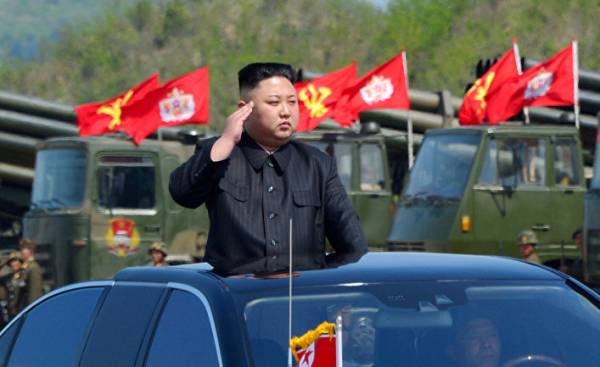 © REUTERS KCNA/Handout via REUTERSЛидер North Korea’s Kim Jong UN at the military parade
© REUTERS KCNA/Handout via REUTERSЛидер North Korea’s Kim Jong UN at the military parade
The Clinton administration back in 1994 thought of preventive war to force Pyongyang to comply with the nuclear non-proliferation regime, but instead signed with him the framework agreement under which North Korea was to abandon its nuclear ambitions in return for American aid and recognition.
This agreement collapsed after September 11, 2001, when the Bush administration called North Korea a rogue state, and his father, Kim Jong-UN, Kim Jong Il, fearing that it will act like Saddam Hussein, withdrew from the NPT and speeded up the program on creation of nuclear-missile weapons.
In an attempt to break this vicious circle of provocations and subsequent punishment in 2003, began their meeting of the international group, consisting of China, South Korea, Russia, Japan, North Korea and the United States. These six-party negotiations led in 2005 to the signing of the Pact, under which Pyongyang agreed again to abandon its nuclear program and join the NPT in exchange for food supplies and energy resources. This agreement opened the door for the normalization of relations with Pyongyang, U.S. and Japan, as well as for negotiations on a peace Treaty on the Korean Peninsula.
But in 2009, the negotiations were disrupted. North Korea refused to participate in them and held a series of missile tests, then in may 2009, tested its nuclear weapons. Becoming in 2011 the Supreme leader, Kim Jong-UN has expanded the program to build missiles and nuclear bombs, while China almost did not hold their partner in the Alliance from provocative actions against South Korea and Japan. By September 2016, the North has conducted five nuclear tests and numerous missile launches, which the United States announced its intention to deploy in South Korea THAAD missile system. China considers this move a direct threat to its security interests, as with radar, this system can monitor the military activities of China in the depths of her territory.
The change of concept and the ability to negotiate
But when trump announced in April, to the shores of North Korea sent the American Armada, when it appeared likely that “a great deal” between the US and China, and once again stubborn Kim Jong-UN, Beijing deep thought and rethought the situation. There is some evidence that China has put some pressure on North Korea to diminish your enthusiasm and abandoned the development of offensive nuclear weapons, long-range.
During the meeting the leaders of the US and the PRC in Florida in the month of April, Chinese leaders have demonstrated their willingness to press harder on Pyongyang in return for America’s refusal from plans of a trade war.
Today there are a number of factors that could force Beijing to re-evaluate “close as lips and teeth” relationship between China and North Korea. China is particularly concerned that if America’s actions in Korea are successful, Washington will strengthen its regional positions, which were lost during a very wishy-washy reversal of the Obama administration towards Asia.
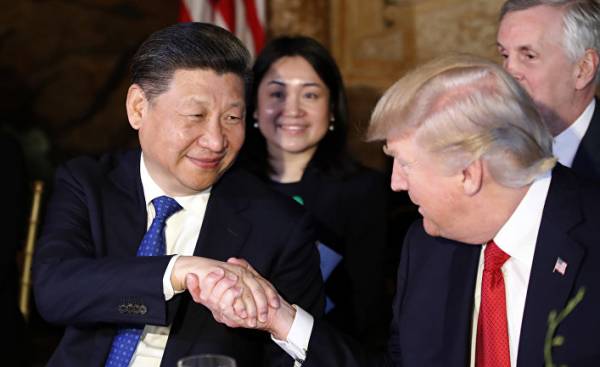 © AP Photo, Alex BrandonПрезидент USA Donald trump and Chinese President XI Jinping
© AP Photo, Alex BrandonПрезидент USA Donald trump and Chinese President XI Jinping
Recent statements of trump that he’s ready to support military force and his old bluff, remind Beijing that the nuclear antics of North Korea can threaten the commercial interests of China or lead to the appearance of nuclear weapons in Japan. There is an impression that trump acts against Pyongyang’s unpredictable and energetic as believes that will be able to provide containment without war.
Thus, the overall aim is to remind China and its protégé, about American power and about the readiness of the new President to use it. Moreover, China is exercising restraint because of his desire to avoid the fall of the regime of North Korea and keep a buffer between China and U.S. forces in South Korea. And while Japan remains faithful to the USA, South Korea has a new President moon Jae-In, who seeks not confrontation, and to agreement with Pyongyang.
DPRK over its 70-year history well learned to set their neighbors against each other. And if relations with China it has somewhat cooled, the ties with Russia strengthened. Moreover, Vladimir Putin is not in the mood to give the Tramp, as it was before, and now he is unlikely to support the American President in his intention “to stop North Korea, if it is to do wrong”.
Back to the future?
In the end, Trump needs with the mediation of China to return to the immediate and verifiable elimination of North Korea’s nuclear program, which was the basis of the six-party agreement of 2005. Otherwise it can get out of this stalemate with a “sea of fire”.
To this end, the tramp and his generals sought to correct a misconception about the decline of America and show that she refuses voluntarily adopted the policy of strategic patience. When the United States confirmed its deterrent capability, they will be able to talk to Russia and China from a position of strength to solve problems of mutual interest — from global trade and nuclear non-proliferation to radical Islam.
The second option, with its obvious disadvantages in balancing on the brink of war, certainly will make changes in the regional balance of power, and, paradoxically, return us to a nuclear solution to the problem, which in 1951 offered General MacArthur, until Truman fired him as Secretary of state Dean Acheson (Dean Acheson) did not bet on deterrence and stalemate in the region. The proposal of MacArthur in 1950 certainly seemed risky, but it was feasible. However, in 2017 it’s more like the imminent Apocalypse.
David Martin Jones teaches, and M. L. R. Smith directs the Department of war studies at king’s College London.
